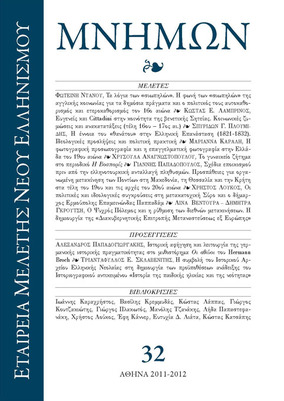Ο Ψυχρός Πόλεμος και η ρύθμιση των διεθνών μετακινήσεων : η δημιουργία της «Διακυβερνητικής Επιτροπής Μεταναστεύσεως εξ Ευρώπης»
Part of : Μνήμων ; Vol.32, 2012, pages 205-221
Issue:
Pages:
205-221
Parallel Title:
The Cold War and international migration regulation : The establishment of the Intergovernmental Committee for European Migration
Section Title:
Articles
Abstract:
The immediate post WWII period saw the establishment of the Inter-governmental Committee for European Migration (ICEM) (now International Organisation for Migration, IOM), as a key organisation in the management of post WWII migration. This paper examines the debates and policies surrounding the creation of the ICEM as an agent responsible for the facilitation and administration of labour migration from parts of Europe to a variety of overseas countries. At the conclusion of the Second World War, the problems surrounding ‘surplus population’ and unemployment in Europe were discussed in many international forums. It was from these discussions that a consensus emerged which saw emigration as a viable solution. To this end, in 1951, the International Labour Organisation convened a Migration Conference in Naples, bringing together key stakeholders. The Naples Conference failed, an outcome driven mainly by the US. The US was particularly concerned with economic stagnation and mounting social unrest related to the ‘surplus population’ in European countries in this Cold War period. At the same time however, it strived at limiting international influence over migration and refugee policies and on receiving countries retaining their sovereign immigration policies. In spite of the disagreements and through a process of negotiation, the US subsequently led the creation of an intergovernmental body, which was established at a conference convened in Brussels in 1951. This newly formed organisation, initially named the Provisional Intergovernmental Committee for the Movement of Migrants from Europe (PICMME), was open only to states with a ‘liberal’ political regime and had specifically designed functions based on inter-governmental negotiations. The US ensured its predominance in the organization through budgetary control and other means. In 1953, the PICMME became a permanent ‘fixture’ of migration regulation and was renamed the Intergovernmental Committee for European Migration (ICEM). Hereafter, ICEM offered operational and financial assistance for migrants’ transportation, language training, reception facilities, settlement services and labour market placement.
Subject:
Subject (LC):




